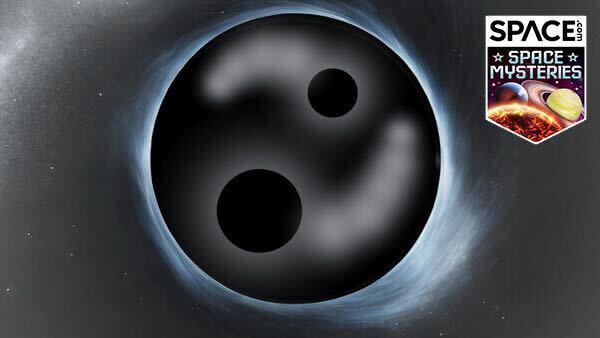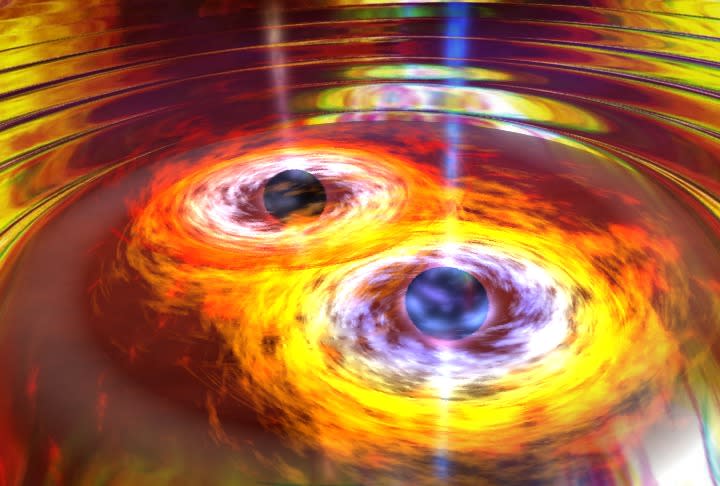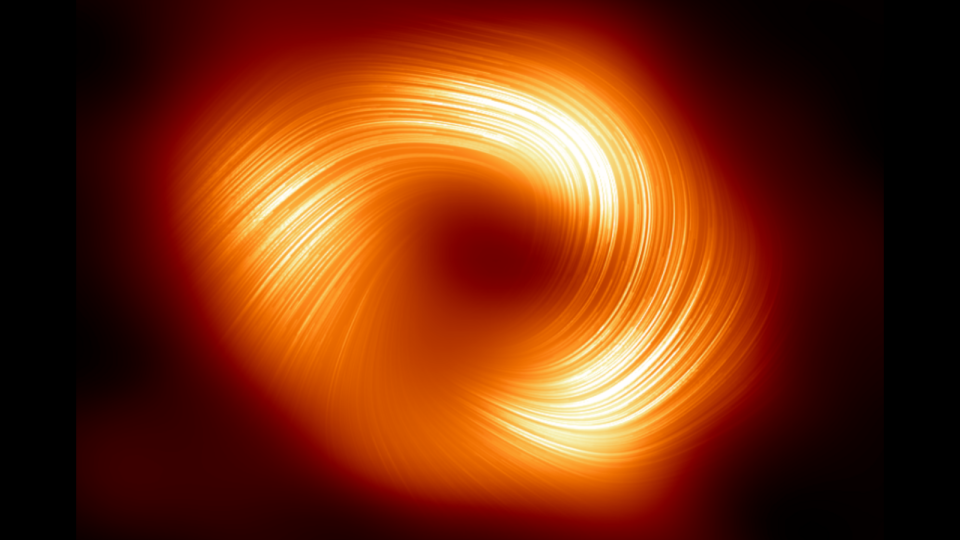
Black holes are monstrous and monolithic regions of space and time that have captured the imagination of humanity. Some are created by the death and collapse of a massive star – and yet no star can produce the most enormous black holes. These are the supermassive black holes that lurk at the hearts of galaxies with masses equivalent to millions or even billions of suns.
Giant black holes like this one are believed to have formed when two smaller black holes once collided and merged. And now scientists are wondering whether we can learn the family tree of a black hole by working backward through the generations.
Related: How do some black holes get so big? The James Webb Space Telescope may have an answer
If there is a cosmological object or event designed to be mysterious, it is the black hole. This region of space is marked by a boundary called the event horizon, the barrier between our universe and whatever is in the void itself. So it is impossible to get a signal and therefore information from outside this barrier.
Furthermore, black holes have very few identifying features, something theoretical physicist John Wheeler once described by saying, “black holes have no hair.” That means that, unlike looking at a child’s hair color or skin color and making a rough guess at their parents’ hair color and completion, ‘hairless’ supermassive black holes don’t seem to provide any clues as to their ancestry – or do they?
Not all black holes are created equally
Imre Bartos is a physicist at the University of Florida who theorizes that the limited characteristics of supermassive black holes—mass, spin, and electric charge—could actually hide details of the original black hole assembly line from which they formed.
The standard view of black hole birth, which involves the death and collapse of massive stars, cannot, he says, explain the formation of the massive black holes we see today. That includes both supermassive black holes and relatively smaller intermediate-mass black holes, with a mass of about 100 to 100,000 times the mass of the Sun.
‘Stars have a sort of limit to how big they can get without basically disintegrating on their own. If a star gets very big, it will explode before it has time to create this dense core that can form the seed for the black stars. hole,” Bartos told Space.com. ‘We expect a natural limit to how massive black holes can be if they form from the death of stars. This mass is about 50 times the mass of our Sun. So it’s a pretty big mass, but nowhere as big as a mass. we see supermassive or intermediate black holes.”
This means that there must be some other process that creates the most monstrous black holes, and observations of tiny ripples in spacetime called gravitational waves suggest that such a process could be successive collisions and mergers of larger and larger generations of black holes.
“How can we do the detective work to go back into the past and see what actually happened in the vicinity of merging black holes? Can we say something about the ancestors of the black holes?” Bartos wondered.


Bartos thinks that understanding what causes black holes to contract and merge is the key to understanding how the universe evolved – and even to understanding the laws of fundamental physics.
“We want to learn, and until now we haven’t fully understood what in the universe actually causes the black holes to converge and merge,” Bartos said. “This can’t just be a random process. There has to be some mechanism that brings the black holes together and merges them. And this is what we’re trying to understand from the limited properties we have available.”
He added that by looking at the mass of a supermassive black hole and the gravitational waves from the merger that created it, researchers could estimate the masses of the black holes that must have come together to create it in the first place. What’s more, Bartos and colleagues theorize that observing how fast the black hole spins could also reveal how fast the black holes that created the black hole were spinning.
Looking at electromagnetic signals from the region where these mergers occurred could also show how they interacted with their environment, according to Bartos. For example, did the black holes feed on gas and dust from their environment to facilitate their own growth?
Black holes also have grandparents
Bartos added that black holes with masses more than 50 times that of the Sun can be found in areas with many other black holes. This means that, just as we have parents, grandparents and great-grandparents, black hole mergers are unlikely to be unique events, and the most massive black holes are the result of repeated generations of mergers.
This generational situation would not only result in the accumulation of mass, but subsequent daughter black holes would also accumulate angular momentum from their ancestors. Bartos said this means that as black holes get bigger and bigger, they must also spin faster and faster.
“If we detect higher spin, it could be an indication that previous mergers may have occurred,” Bartos said. “It turns out that for some of the more massive black holes we’ve seen so far, we have an indication of the high spin we would expect from these successive mergers.”
Although Bartos finds the idea of black holes with ‘grandparents’ fascinating, and believes we can reveal some details of black hole parents from gravitational wave observations, the story of black hole grandparents may be lost over time .
“There is no way we can detect the previous mergers directly from gravitational wave observations. We would have to use detectors for millions of years, which is unlikely,” he said.


Related stories:
— Small black holes left over from the Big Bang could be prime dark matter suspects
— What is an event horizon for a black hole (and what happens there)?
— Scientists have found a black hole powering a fountain of molecular gas in the ancient universe
The chain of mergers that would create a supermassive black hole is thought to take at least 1 billion years, but these cosmic titans have been observed in the universe since just a few hundred million years after the Big Bang. These observations come from the James Webb Space Telescope (JWST). That leaves a challenge. Scientists have yet to fully explain how these cosmic titans grew so big so quickly. Perhaps, however, the clues lie in the ancestral mechanism itself.
“If we see the processes that merge these black holes, we can see what the starting points are for supermassive black holes in galactic centers,” Bartos said. “We can see how fast the process is, how widespread it is, and that can help us understand how big a role this may play in the process of forming the more massive black holes.”
Bartos expects that as gravitational wave detectors become more sensitive, humanity will notice these ripples in space and time from more distant, and therefore early, black hole mergers. This means we must continue to learn more about how black hole growth has evolved over the 13.8 billion year history of the cosmos.
“I’m very excited to see things for the first time and discover things that push the limits of our knowledge,” concluded Bartos. “When we look at the extremes, things are very different from what we’re used to. And black holes are extreme in many ways.”